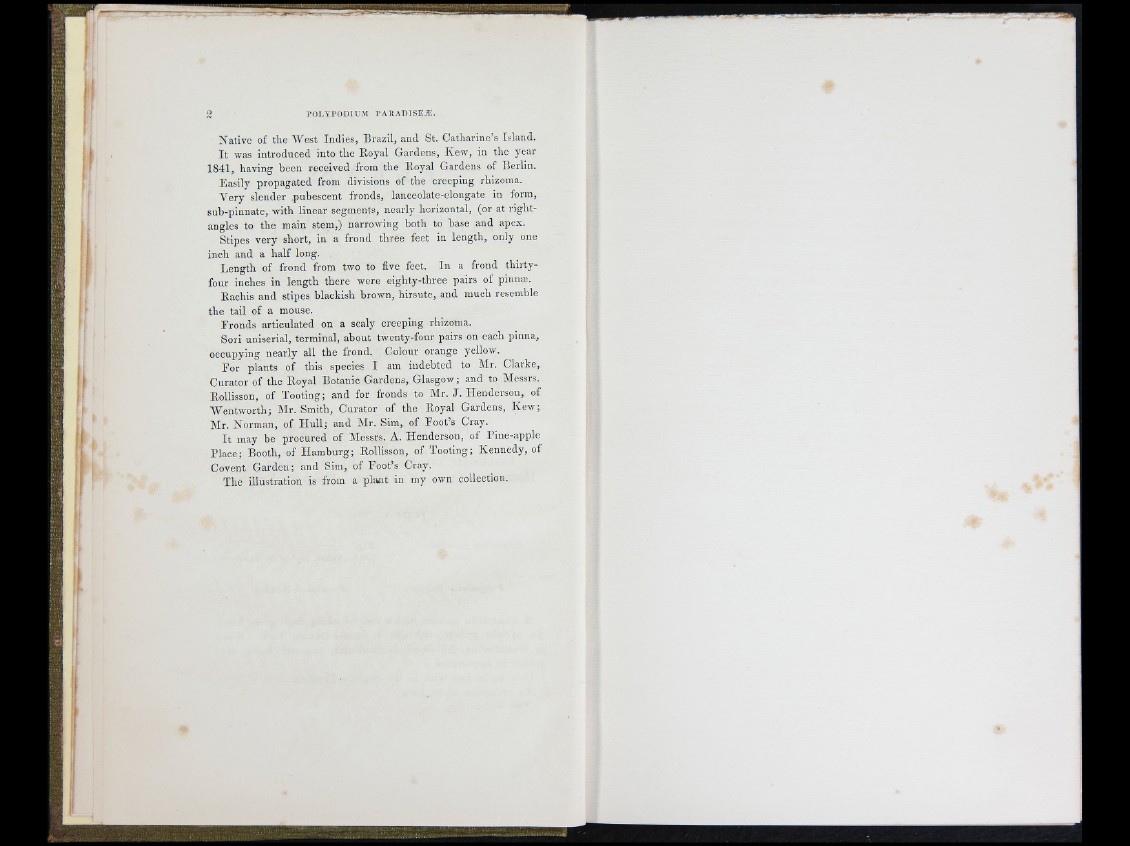
mm S I
;3 p o i .y r oD iuM p a r a d i s E j L .
Native of the We st In d ie s, Brazil, and St. Ca tha rine’s Island.
I t was introduc ed into the Royal Gardens, K ew , in the year
1841, having been received from the Royal Gardens of Berlin.
Easily propagated from divisions of the creeping rhizoma.
V e ry slender pubescent fronds, lanceolate-elongate in form,
sub-pinnate, wuth linear segments, nearly horizontal, (or at right-
angles to the main stem.) narrowing both to base and apex.
Stipes very short, in a frond three feet in len g th , only one
inch and a h a lf long.
L ength of frond from two to five feet. I n a frond thirty-
four inches in length th e re were eighty-three pairs of pinnec.
Rachis and stipes blackish brown, hirsu te , and much resemble
the tail of a mouse.
F ro n d s articulated on a scaly creeping rhizoma.
Sori uniserial, termina l, about twenty-four pairs on each pinna,
occupying nearly all the frond. Colour orange yellow.
F o r plants of this species I am indebted to Mr. Clarke,
Curator of the Royal Botanic Gardens, Glasgow; and to Messrs.
Rollisson, of T ooting; and for fronds to Mr. J . H en derson, of
W en tw o rth ; Mr. Smith, Curator of the Royal Gardens, Kew;
Mr. Norman, of H u ll; and Mr. Sim, of Foot’s Cray.
I t may he procured of Messrs. A. H en derson, of Pine-apple
P la c e ; Booth, of H am b u rg ; Rollisson, of T ooting; K en n ed y , of
Covent G a rd en ; and Sim, of Foot’s Cray.
The illustration is from a plant in my own collection.
a